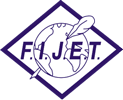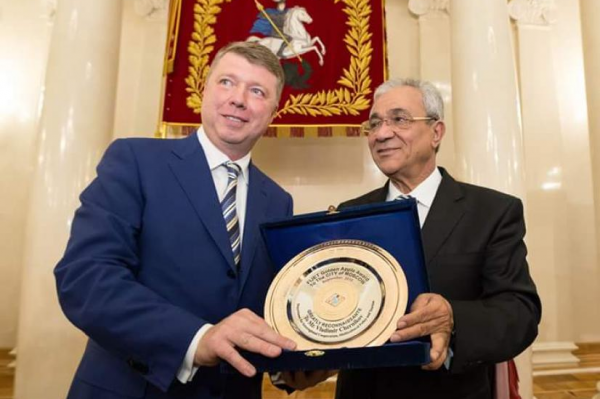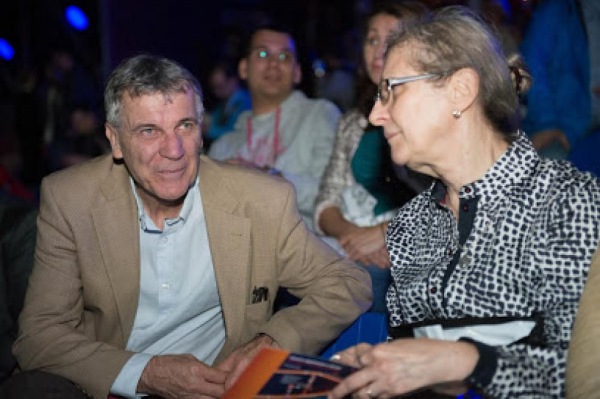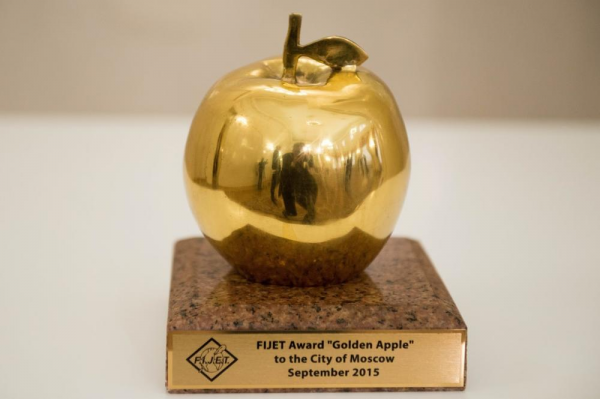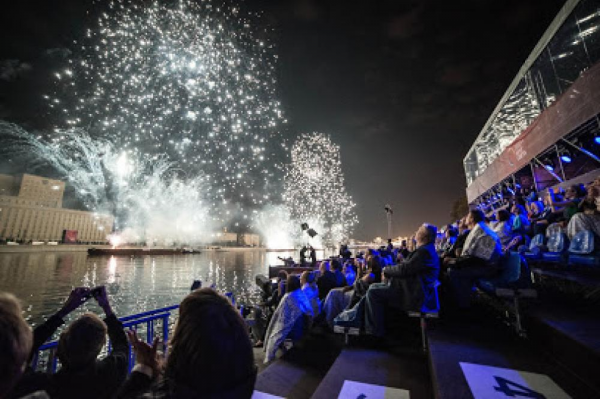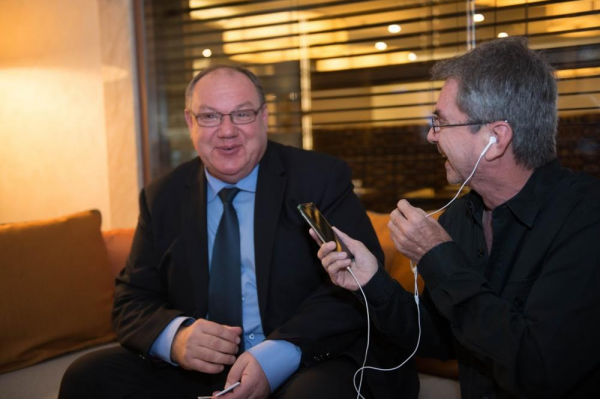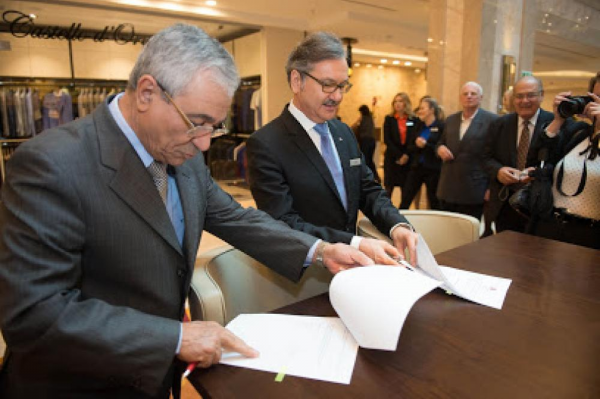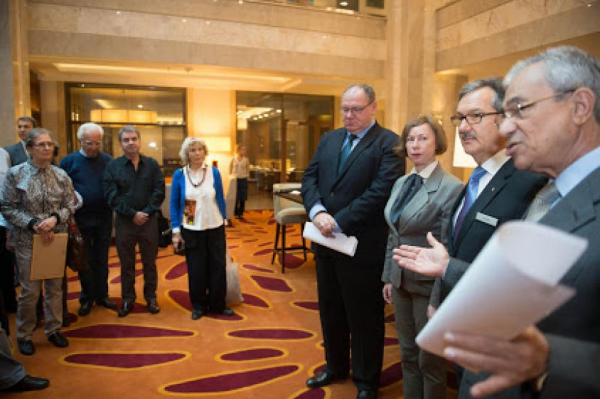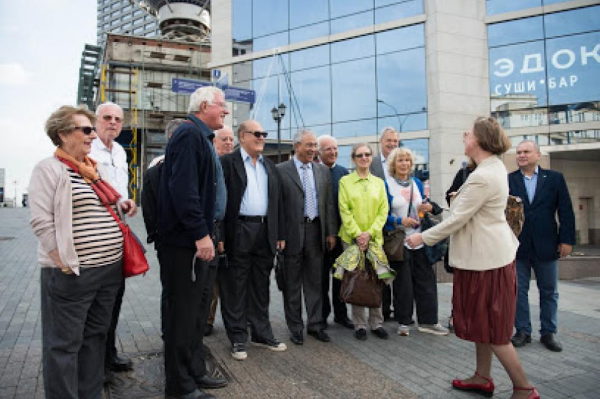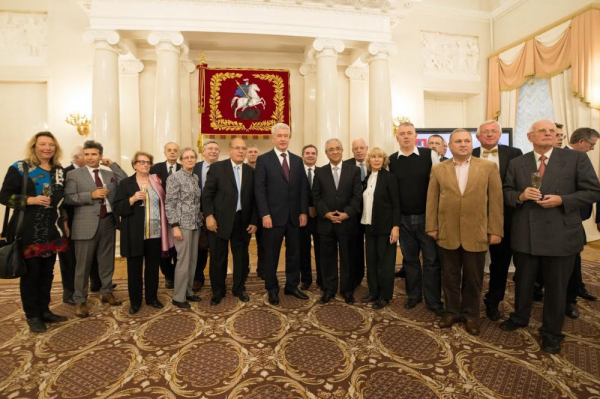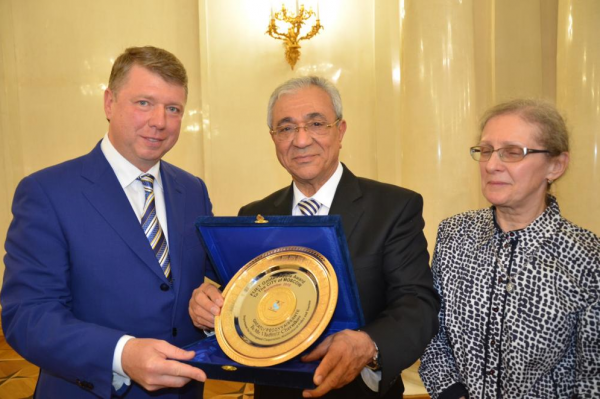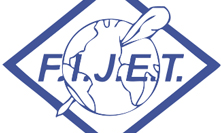Tourism in the city of Moscow
Moscow is the most popular tourist destination among Russian cities. This is attested, in particular, by the latest Hotel Price Index report, based on hotel booking data from the Hotels.com websites worldwide for the first half of 2015. 17.3 million Russian and foreign citizens visited Moscow in 2014. An increase in tourist interest for Moscow is also testified by statistics on the number of guests at hotels and similar lodging facilities: in 2010, 4.1 million tourists visited the Russian capital, whilst in 2014 the number reached 5.5 million, i.e. 1.4 million more.
Moscow Hotel Complex
The Department for Multicultural Policy, Interregional Relations and Tourism of Moscow has put together rankings for Russian regions regarding the performance of collective lodging facilities, based on data from the Russian Federal State Statistics Service.Under these rankings, at the end of 2014 Moscow ranked first by the number of guests at collective lodging facilities (CLF), the total number being 5 million 618.8 thousand guests. The Krasnodar Region ranked second with 4 million 419 thousand guests, followed by Saint Petersburg, 2 million 987.8 thousand guests This success has been facilitated by a rich supply from Moscow’s hotel complex, which comprises anything from 5-star hotels to hostels. As evidenced by global ranking data, Russia’s capital is currently home to numerous budget lodging facilities (mini-hotels, hostels, 2-3 star hotels) offering a high level of service, which makes Moscow quite attractive for budget tourists.The year 2014 set a record in terms of gains in hotel supply.
Aside from smaller lodging facilities (mini-hotels, hostels, guesthouses, service apartments), nine 4000-bed hotels started operating in Moscow in 2014. In 2015, the capital is going to receive 18 new places, most of them 3-star economy-class hotels. Overall, at present Moscow has got 273 hotels, about 300 hostels, and 203 mini-hotels. The capital’s total lodging supply is currently 50 thousand rooms. Another 50 or so new hotels are scheduled for launching before the start of the 2015 FIFA World Cup.
Moscow’s Tourism Opportunities
Moscow offers great potential for tourists with kids, including those keen on educational tourism. Depending on the leisure preferences of the child and his/her parents, families can put together an exciting program that may include visits to multiple museums oriented towards children as well as many of the cultural places of interest in the capital: children’s theaters, the oceanarium, the “cities of professions” with programs for kids ages 1.5 to 14, etc. The capital provides adults and children with an opportunity to visit over 270 museums, 170 theaters, and a great many historical and cultural places of interest. Downtown Moscow is an exciting place that features side by side monuments of various architectural styles from various epochs in history. Red Square alone is home to structures built in 5 different centuries, like the Kremlin’s Saviour Tower built during the reign of Ivan III (the 15th century), Lenin's Mausoleum, constructed in the early 1930s, Saint Basil's Cathedral, erected on orders from Ivan the Terrible (the 16th century), and the GUM shopping mall, an exemplar of eclecticism from the 19th century. On top of that, Moscow is, of course, a city of temples and monasteries. Currently, there are over fifteen hundred temples and churches in the capital. It must be a tall order to see Moscow’s entire set of sights in one day. However, even transit tourists can still get a decent idea of what the Russian capital is like, its architecture, dimensions, and history thanks to its state-of-the-art tourism services and well-developed infrastructure. Aeroexpress trains, operating at all the airports within Moscow’s air-hub, will take you downtown promptly and inexpensively. You’ll be able to check out, all within just a few hours, some of the famous stations of Moscow’s subway, take a general sightseeing tour of the city on a double-decker or a water bus (you can get a special combo ticket to use both services). You can also enjoy a fantastic panorama of the city on seven hills from one of the viewing platforms equipped with binoculars. Note that you can take boat tours of Moscow even in wintertime – the capital has got a fleet of icebreaker yachts available for tours even when the river is covered with ice.
Moscow hosts numerous ethno-cultural events all year long. Most of them are organized at a metropolitan scale. A vivid example of this type of event with great tourism potential is the Russian Field festival of Slavic cultures staged annually in Moscow. The 2015 festival featured representatives of 38 regions of Russia. The festival’s geographic reach is extending year after year, and year after year there are more and more masters of the arts and crafts from various regions of Russia, as well as tourists interested in learning more about Slavic culture, trying to be a part of this major event.
What definitely sets Moscow apart from other regions of Russia is its rich event line. There are very few capitals out there that could boast hosting this many large-scale events. The largest of them are the Times and Epochs, a festival for historical reconstruction staged in early July, the grandiose fall festival Circle of Light, the Saviour Tower festival, the metropolitan festivals Easter Gift, and Journey to Christmas, as well as multiple ethno-cultural festivals, all known to attract a great many foreign and domestic visitors into Moscow.
Statistics of Event Tourism
The annual festival for historical re-enactment Times and Epochs has been staged in the grounds of the Kolomenskoe museum-preserve since 2011. Every year, they dedicate the festival to a different historical epoch: the 2011 festival was dedicated to the Ancient Rus epoch, the 2012 one was related to the Time of Troubles and the events of 1612, while the third festival demonstrated a wide panorama of the Middle Ages. In 2014, they reconstructed the events of the beginning of World War I, and the 2015 festival had to do with the epoch of Ancient Rome. In 2011, the event brought in over 75,000 visitors and over 1,000 re-enactment artists. By 2015, the number of visitors has grown 3.6 times, while the number of artists representing 52 history clubs from 11 different countries (Russia, Germany, Italy, the Czech Republic, Israel, Austria, France, Greece, Tunisia, Romania, and the Netherlands) has increased 2.2 times.
In 2015, Moscow hosted for the Moscow International Festival “Circle of Light” the fifth time. Professionals in the area of 2D and 3D graphics presented to Moscow’s residents and guests their cutting-edge multimedia and lighting installations over the city’s architectural resources. Among the sites that have been the venue for the festival are the Red Square, Manege Square (the façade of the Central Exhibition Hall Manege), the Central House of Artists, Gorky Central Park of Culture and Leisure, the Ostankino Tower, the grounds of the National Exhibition of Economic Achievements, the Bolshoi Theatre, the Tsaritsyno museum-preserve, and Kuznetsky Most Street. By tradition, the festival draws large audiences, the number growing year after year. In 2014, the event drew about 6 million residents and guests of the capital. It is free to attend any of the festival’s sites. The Circle of Light festival has won several awards: Russia’s Brand Number One (Category: Festival, 2013), Event of the Year (Nomination: Main City Event, 2012), and Brand of the Year/EFFIE (Nomination: Entertainment Industry, 2011 and 2012).
Major Events in the Area of Tourism
In 2015, Moscow earned recognition from the World Federation of Travel Journalists and Writers (FIJET), which comprises around 800 journalists and writers from 30 countries, as the most dynamically developing tourism area, and was awarded the Golden Apple prize.In November, 2015, Moscow will host the Seventeenth Congress of the European Federation of Tourist Guide Associations (FEG), one of the world’s most significant events related to tourism. The FEG was founded in 1986 in Paris. Currently, it comprises over 200,000 professionals from 18 member states within the organization. The Russian Association of Guides/Translators, Tour Guides, and Tour Managers was admitted for membership in the FEG in December, 1991.
